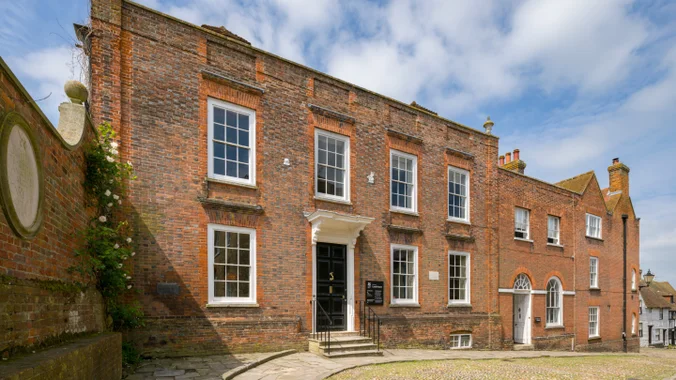Red-brick fronted house with literary associations – both Henry James and E. F. Benson lived here.
The garden
Lamb House has a walled garden, one of the largest gardens in the old town of Rye; it was designed as we see it today by a friend of Henry James called Alfred Parsons.
Find roses, lilies, spring bulbs and many herbaceous varieties bordering the lawn which ensure continuous colour and interest throughout the year.
Also to be found in the garden are the graves of James’ much loved dogs. The garden is a tranquil contrast to the busy streets of the town in the summer and sitting beside the pond one can fully understand why James had such affection for his garden. Today the garden is a refuge for visitors and local people alike.
Tucked away down a cobbled street in the heart of Rye is Lamb House. Built in 1723 by the Lamb family, the house became the mayoral home of Rye and includes George I as one of its more distinguished guests. Its charming brick façade and walled garden have seen centuries of owners, many of whom were at the centre of Rye society and connected to the arts.
Fit for a King
Lamb House was built in 1723 by James Lamb, a wealthy wine merchant and local politician. When a storm drove King George I’s ship ashore at Camber in 1726 Lamb House was considered the most suitable accommodation for him, so James Lamb gave up his bed. In 1893, the Lambs sold the house to a wealthy local banker, Francis Bellingham.
A refuge in Sussex
Following the failure of his play Guy Domville on the London stage in 1895, the American novelist Henry James fled to Sussex to seek calm and refuge, away from the embarrassment he felt. He was on a quest for what he called a ‘lowly refuge,’ and Lamb House suited his desire for a permanent home away from the bustle of London life. He discovered the town of Rye, and Lamb House, quite by chance whilst visiting his friend, the architect Edward Warren.
Taking on Lamb House
Enchanted by the house, when the opportunity arose, he took out a 21-year lease in 1897. He bought it two years later. The lease stated that James must keep the garden ‘cropped and manicured’ and that the house must be repainted with three coats of ‘good oil colour’ at the end of the seventh and fourteenth years. In fact, it took nearly eight months to make Lamb House ‘sanitary and comfortable’ and James moved in during June 1898.
Henry James grew more and more attached to Lamb House, filling it with books and paintings by artists that he admired, such as Flaubert, Whistler and Burne-Jones.
An inspiring place to write
James wrote his novella The Turn of the Screw from his London apartment, whilst Lamb House was being renovated. Working from Lamb House he wrote his most acclaimed novels: The Wings of the Dove, The Ambassadors and The Golden Bowl.
‘The Master’
It was while living and working at Lamb House that James began to be known as ‘The Master’. He usually wrote in the Green Room, but he preferred the Garden Room in summer. This was a self-contained building next to the house. Constructed in 1743 as a separate banqueting room, it was destroyed in 1940 during a bombing raid. Lamb House appeared as Mr Langdon’s home in James’s novel The Awkward Age in 1898, which was the first novel James wrote after moving in.
Order of Merit
On New Year’s Day 1916, less than two months before his death, Henry James was given the Order of Merit by George V, having completed 20 novels, over a hundred short stories and three plays. He continued dictating letters to his secretary, up until his death on 28 February 1916.
If you have yet to book your accommodation then have a look at https://saltcote.co.uk located about 700 yards from Rye High street with plenty of parking and generally very quiet.

